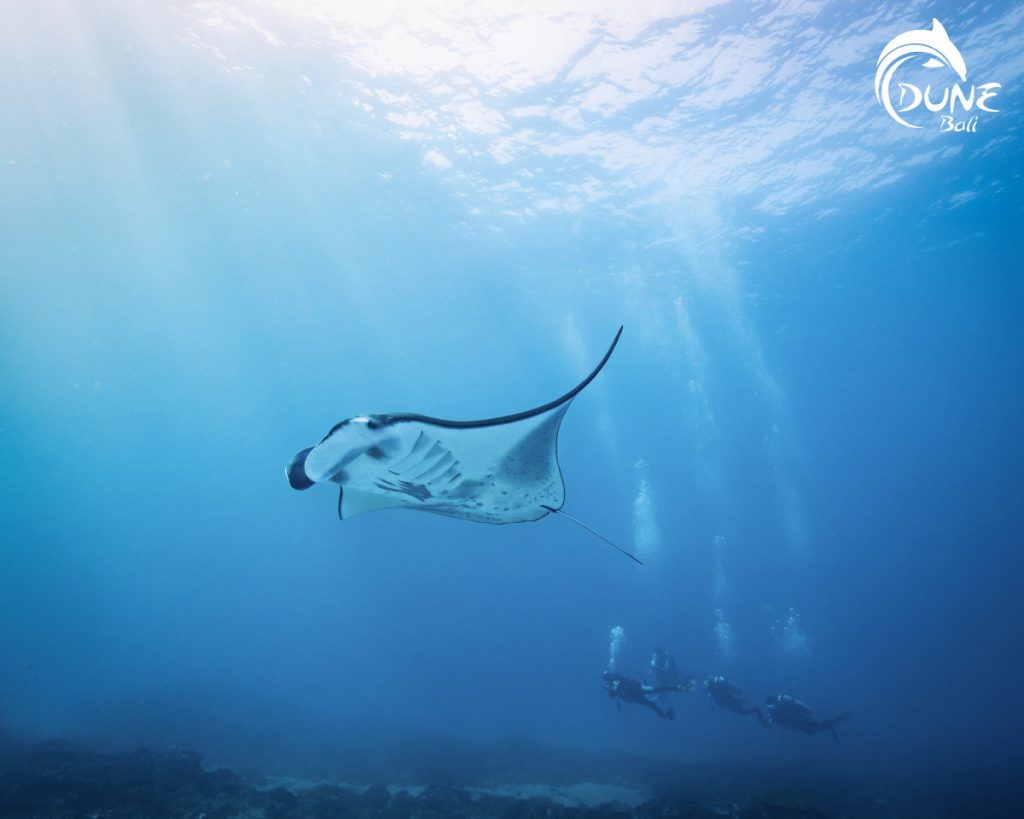
The magnificent Manta Rays has sparks inspiration of many. However, not everyone has heard about these wonderful animal—and that’s totally understandable as this creature can only be found in just few places in the world; one of them being the Manta Point Nusa Penida in Bali, Indonesia. Since not everyone knows Manta, it’s only natural to have questions popped up in mind upon hearing this creature. Below is some of most frequently asked questions regarding the beast—and the answer to them.
What Actually is Manta Point Nusa Penida?
Manta Point is one of Bali’s most famous diving destinations. Manta Point is a short boat trip away on the south east side of the satellite island of Nusa Penida. A speed boat ride from Sanur takes around 45 minutes, while a journey to the Lembongan island resorts takes about 20 minutes. Despite the fact that manta rays may be found all over the world, Indonesia boasts a plethora of great manta ray gathering spots. Manta Point is located in a beautiful setting on a tiny bay beneath Nusa Penida’s high cliffs. Manta rays frequent this location every year and can number in the dozens.
Is Indonesia Good for Seeing Manta Rays?
Manta rays, whale sharks, and other iconic megafaunas have been declared as the world’s largest sanctuary in Indonesia. Furthermore, major biodiversity hotspots like Raja Ampat and the Savu Sea have been designated as national and regional protected areas.

Can Manta Ray Kill You?
Their enormous size can come as intimidating, and their cousin the stingrays do sting people. Manta Rays, in the other hand, is totally harmless. They might be big and look intimidating, but they actually are gentle giant at heart! Manta Rays would never hurt divers and snorkelers—they do not have the stingy barbs in the tail like their cousin. Manta rays, on the other hand, are generally inquisitive creatures who enjoy swimming near divers or snorkelers. They are just giant buddies and swimming with them is totally safe!
Will Manta Rays Bite?
Manta rays actually have teeth, yet they can’t bite you. On the bottom of their lower jaw, mantas have a lengthy tooth band. It has the appearance of sandpaper. However, mantas can’t even eat with their mouths: they acquire plankton by swimming ahead all the time. The mouth of a manta ray may appear threatening due to its size, yet mantas are incapable of swallowing anything other than plankton. They can’t even swallow little fish, and if one is accidentally sucked into their mouth, the manta would spit it back out. Gobbling up human limbs would never cross their mind.
Can You Touch Manta Rays During the Dive?
You will not only frighten the majestic and exquisite Manta Ray away, but you may also harm or kill the animal. A human hand’s tiny contact can disrupt the mucus layer on their skin, allowing germs to infiltrate and cause illness. We don’t want to do harm to the lovely species we observe in the underwater.
More Travelling Stories:
Scuba Diving Amed Bali and Reasons Why Should Explore
Komodo Sailing Trip Destination for Wilder Adventure!
Best Time to See Them in Manta Point Nusa Penida?
The Indonesian Throughflow provides benefits to the Nusa Islands. It is a large body of water streams that flows from Timor to Bali throughout the Indonesian archipelago. The water is transferred from the Pacific to the Indian Ocean by this movement. It is the world’s biggest water flow, which means that the strait between Bali and Lombok is constantly flooded with nutrient-rich currents. And this nutrient-rich water attracts Manta Rays, which feasts on planktons. Thanks to this, the Manta Rays are present in Manta Point Nusa Penida all year round! However, it’s best to adjust your diving plan according to Bali’s climate chart. No one wants their dive ruined by huge rains, so avoid the wet season from December to March. We’ll say that the ideal time to go manta snorkeling in Bali is during the dry season. It runs from May to November and offers the finest weather and flat seas.